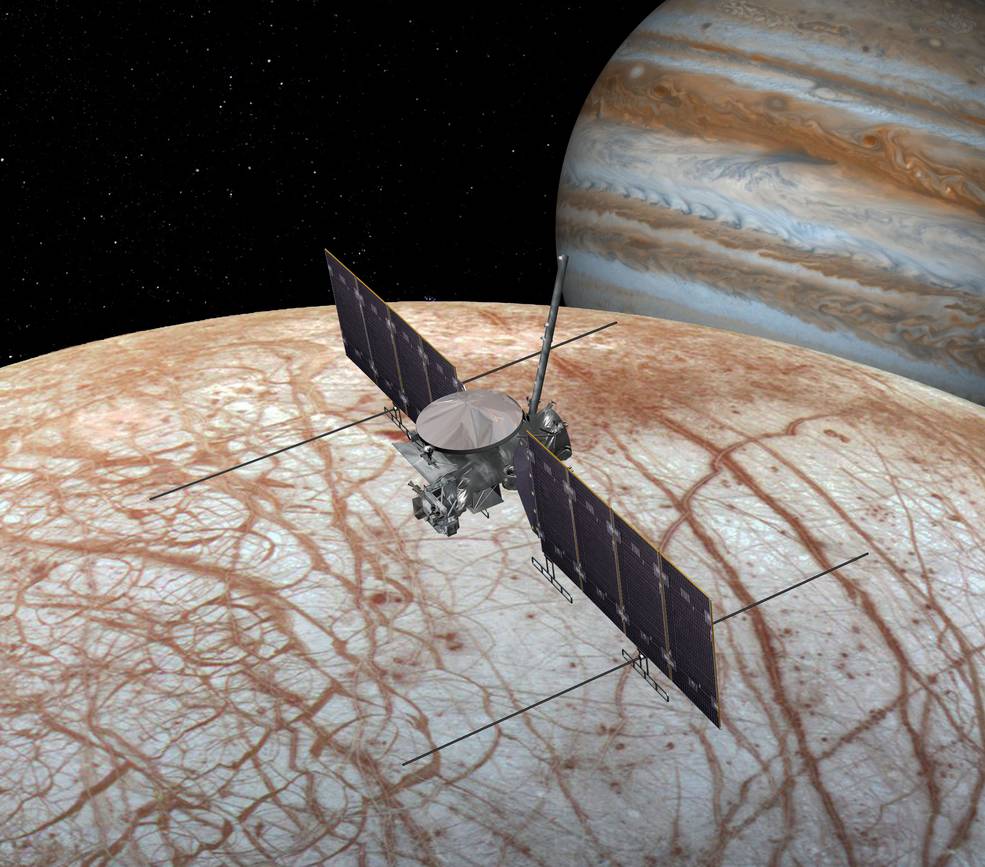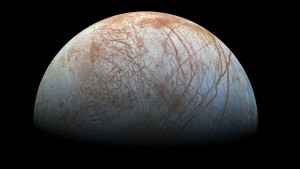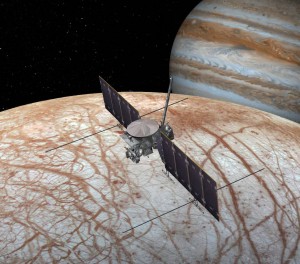Curious about the icy moon of Jupiter? So is NASA! That’s why they’re sending a spacecraft to study Europa.
Image credits: NASA/JPL-Caltech/SETI Institute
Europa, one of Jupiter’s moons, could have an ocean of liquid water underneath its icy surface. NASA will soon send a mission to the mysterious far-off moon and investigate whether it could have conditions favorable for life.
How thick is the icy crust? This mission will find out. It’ll look for subsurface lakes and determine how deep the ocean is, as well as its salinity.
The spacecraft will orbit Jupiter while sending back high-resolution images of the moon’s surface so that scientists can figure out what it’s made of. It’ll also allow us to learn about the structure of the moon’s interior and icy shell.
Artist’s concept of a Europa spacecraft. Image credit: NASA/JPL-Caltech
The mission is now able to move into its preliminary design phase, known as “Phase B” which will begin on February 27th. A major NASA review was completed on February 15th known as the Key Decision Point-B review.
In Phase A, the 10 instruments that will study Europa were selected and accommodated. Phase B will continue through September. At the end of this phase, the preliminary design for the systems and subsystems for the mission will be finished.
Solar cells and science instrument detectors have already been tested for the mission, and more testing will take place in this next phase as well.
The selection of subsystem vendors and prototype hardware elements for science instruments will take place during this next phase. Additionally, subassemblies for the spacecraft will be built and tested.
So when will it launch?
The launch is planned for the 2020s. After spending several years traveling through space, the mission will arrive in the Jovian system and orbit Jupiter. There will be several opportunities for close flybys of Europa, as it will orbit Jupiter as often as every two weeks. 40 to 45 flybys are planned for the prime mission.
What will happen during the upcoming phases of this mission’s development? Final design, fabrication of the spacecraft, assembly and testing, and launch!
Learn more about Europa at NASA.gov.



